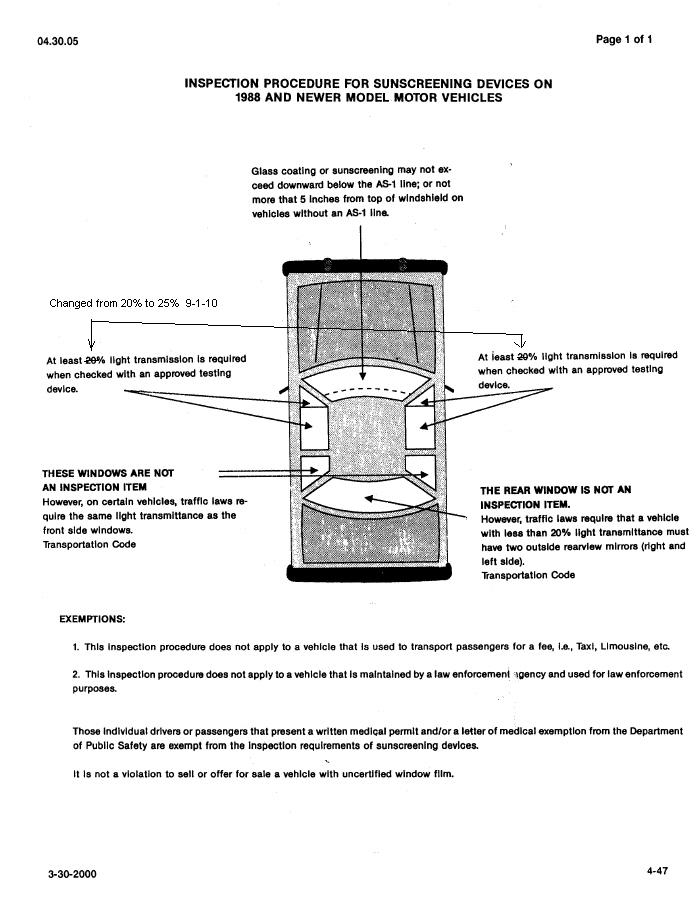

- Michigan tinted window law cracked#
- Michigan tinted window law driver#
- Michigan tinted window law license#
- Michigan tinted window law plus#
(2) the prescription or physician's statement of medical need specifies the make, model, and license plate of one or two vehicles that will have tinted windows and
Michigan tinted window law driver#
(1) the prescription or physician's statement of medical need is issued to (i) the driver's parent, child, grandparent, grandchild, sibling, or spouse, or (ii) a person for whom the driver is a personal care attendant (b) For the purposes of paragraph (a), clause (2), a driver of a vehicle may rely on a prescription or physician's statement of medical need issued to a person not present in the vehicle if: (v) the rear and side windows of a police vehicle. (iv) the side and rear windows of a limousine as defined in section 168.002, subdivision 15 or (iii) the side and rear windows of a vehicle used to transport human remains by a funeral establishment holding a license under section 149A.50 (ii) the rear windows or the side windows on either side behind the driver's seat of a van as defined in section 168.002, subdivision 40 (i) the rear windows of a pickup truck as defined in section 168.002, subdivision 26 (iii) the prescription or statement contains an expiration date, which must be no more than two years after the date the prescription or statement was issued or (ii) the prescription or statement specifically states the minimum percentage that light transmittance may be reduced to satisfy the prescription or medical needs of the patient and (i) the vehicle's driver or a passenger possesses a prescription or a physician's statement of medical need (2) are required to satisfy prescription or medical needs, provided: (1) have not been modified since the original installation, nor to original replacement windows and windshields, that were originally installed or replaced in conformity with Federal Motor Vehicle Safety Standard 205 (a) Subdivision 4 does not apply to glazing materials that: The marking must be in a manner so as not to obscure vision and be readable when installed on the vehicle. (4) when any material has been applied after August 1, 1985, to any motor vehicle window without an accompanying permanent marking which indicates the percent of transmittance and the percent of reflectance afforded by the material.
Michigan tinted window law plus#
(3) when any side window or rear window is composed of or treated with any material so as to obstruct or substantially reduce the driver's clear view through the window or has a light transmittance of less than 50 percent plus or minus three percent in the visible light range or a luminous reflectance of more than 20 percent plus or minus three percent or (2) when any window on the vehicle is composed of, covered by, or treated with any material that has a highly reflective or mirrored appearance (1) when the windshield is composed of, covered by, or treated with any material which has the effect of making the windshield more reflective or in any other way reducing light transmittance through the windshield Glazing material prohibitions.Ī person must not drive or operate any motor vehicle required to be registered in the state of Minnesota upon any street or highway under the following conditions: (c) Paragraph (a), clause (2), does not apply to authorized emergency vehicles. (b) Paragraph (a), clauses (2) and (3), do not apply to law enforcement vehicles. (3) any sign, poster, or other nontransparent material upon the front windshield, sidewings, or side or rear windows of the vehicle, other than a certificate or other paper required to be so displayed by law or authorized by the state director of the Division of Emergency Management or the commissioner of public safety. (vi) an identifying device as provided in section 169.58, subdivision 5, when the device is mounted or located near the bottommost portion of the windshield or (v) electronic toll collection devices and (iv) global positioning systems or navigation systems when mounted or located near the bottommost portion of the windshield (iii) driver feedback and safety monitoring equipment when mounted immediately behind, slightly above, or slightly below the rearview mirror (2) any objects suspended between the driver and the windshield, other than:
Michigan tinted window law cracked#
(1) a windshield cracked or discolored to an extent to limit or obstruct proper vision

(a) A person shall not drive or operate any motor vehicle with:


 0 kommentar(er)
0 kommentar(er)
